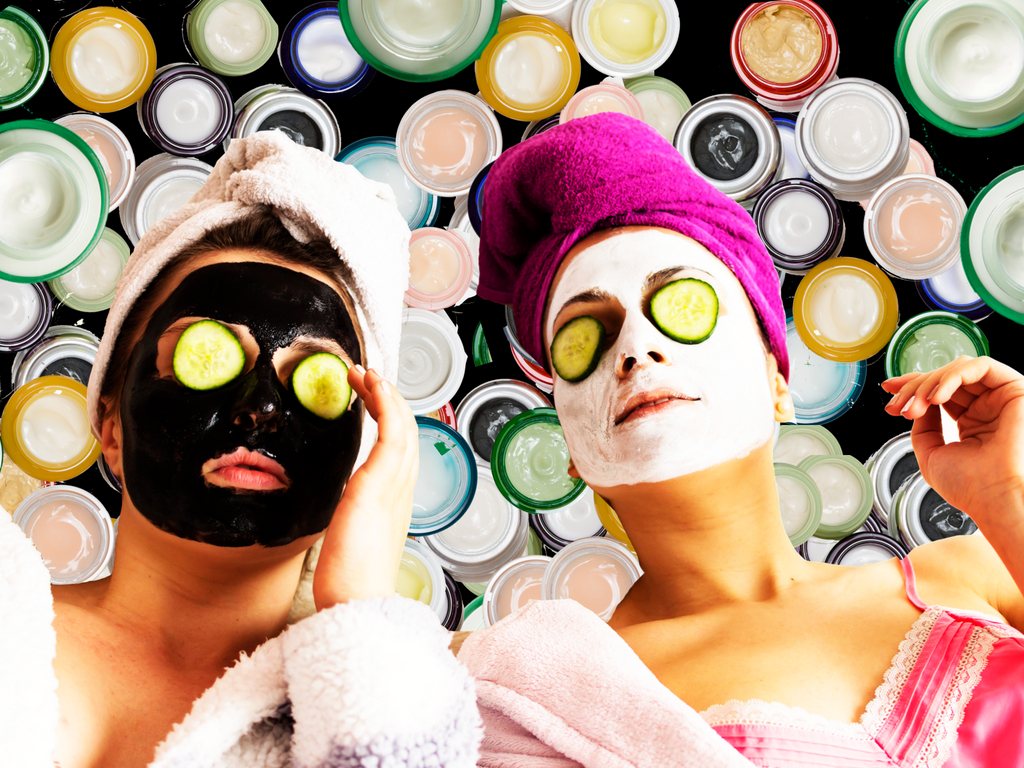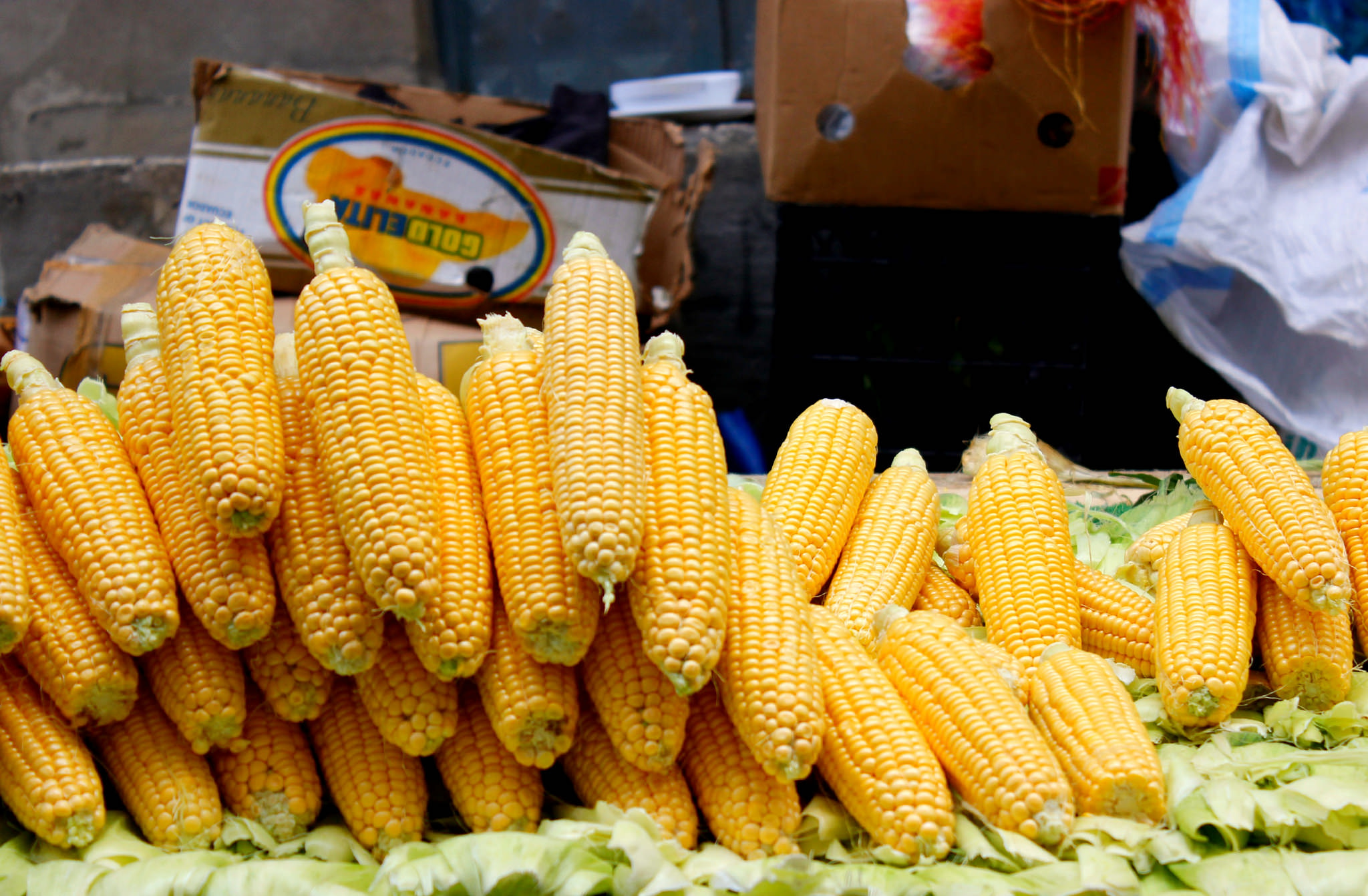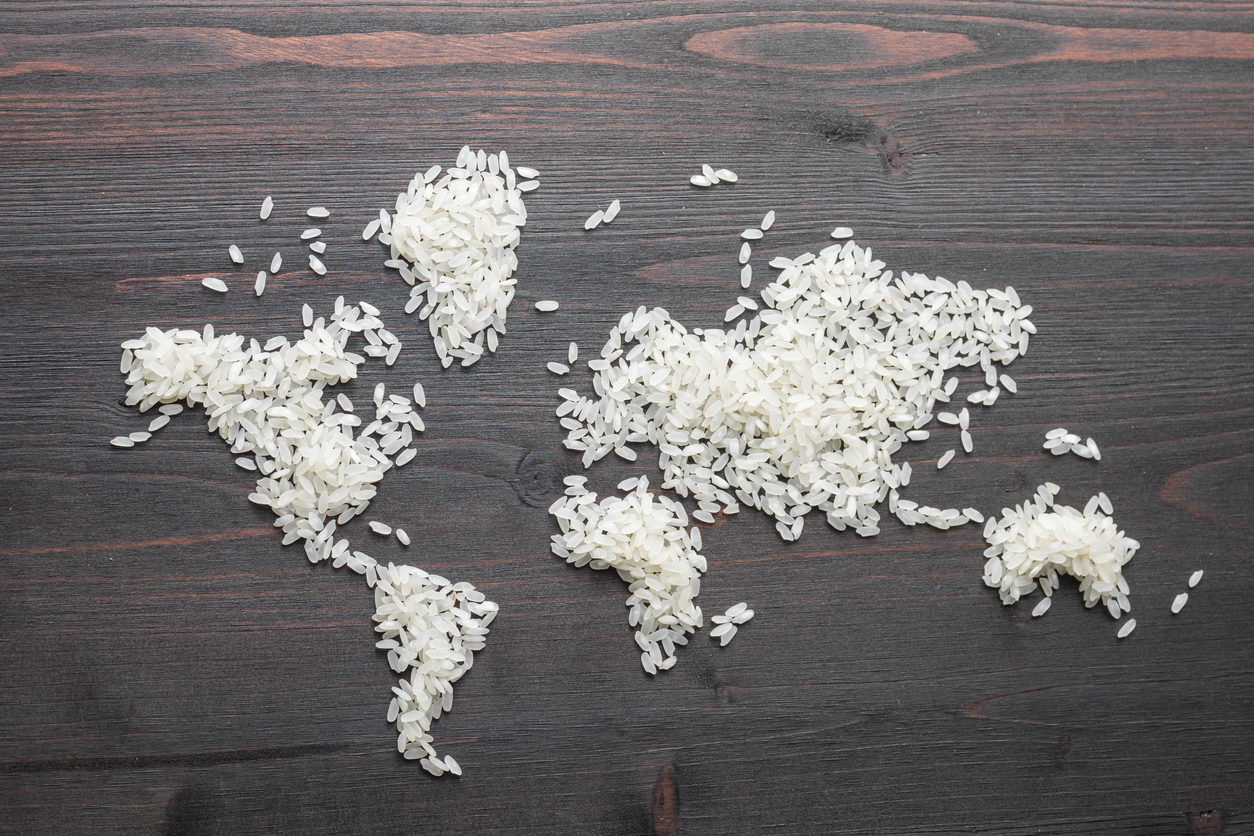
Photos by iStock / Collage by New Food Economy
The last time I went to replenish the staples of my nighttime skin care regime, I noticed something odd. Full disclosure: It had been a little while. I’m daunted by the array of oils, serums, and peels available at the average pharmacy or makeup store, and I try to shop for essentials—moisturizer, cleanser, maybe a face mask—no more than once a year. But when I logged onto Sephora’s website, something had changed since I’d last stocked up. The offerings had taken an unmistakably gastronomic turn.
I saw an air-whipped moisturizer “packed with leafy superfoods”—kale, spinach, and green tea. An eye cream fortified with cucumber extract. A sleep mask with pumpkin and papaya enzymes. A coconut lip balm enriched with a “blend of apricot kernel, black currant seed, and grapeseed oils.” There were so many food items in the product names, I almost felt like I was shopping for groceries.
When, I found myself wondering, did food become the center of the skin care conversation?
 NFE
NFE Food is no longer a supporting player in the world of cosmetics. It’s pushed its way into a starring role
Maybe I shouldn’t have been so surprised. I’ve exfoliated with honey and sugar for years; home beauty remedies have long relied on basic household goods. And yet I’ve always thought of pantry-to-product treatments as the antithesis of the glamor that’s characterized the industry since I’ve had access to television. Curious to see if the trend was really as pervasive as it seemed, I attended New York City’s annual Beautycon, where every corporate beauty brand under the sun sets up thematic booths for enthused teenagers and celebrity panelists (even Hillary Clinton showed up). As I walked the floor, the avocado jelly masks and broccoli-and-tea-tree dry shampoo made it clear: Food is no longer a supporting player in the world of cosmetics. It’s pushed its way into a starring role.
But why is there suddenly so much food in our beauty products, and how did fruits and vegetables come to dominate the marketing of items no one eats?
To an extent, the cosmetic industry’s food fixation isn’t all that surprising. Some of the world’s most iconic cosmetic brands started in the kitchen. In the early 1920s, Estée Lauder started concocting homemade cosmetics over the gas range in her Corona, Queens apartment. Mark and Mo Constantine, the founders of Lush Cosmetics, began working with pantry staples to create the vegan and vegetarian soaps they couldn’t find elsewhere. Before she became the founder of Carol’s Daughter, Lisa Price used the kitchen of her Brooklyn brownstone to transform almond, oats, and vanilla into what would become her signature line of natural hair and skin care products.
“Attitudinal changes toward natural ingredients have acted as a catalyst in the rise of ‘kitchen beauty’— products that can be made at the kitchen table (or merely look like they have been),” according to the report. It’s about providing products with recognizable ingredients, supposedly made using processes you could replicate at home. This approach to marketing gives consumers a sense of control, in Mintel’s view, and helps to reassure people that a product is safe. But that’s not all: Increasingly, Americans literally want to feed their skin.
“Skin is now a component of the body that people are very focused on from a nutritional aspect,” says Mintel analyst David Tyrrell, who suggests food ingredients function as a “natural remedy” in the mind of many consumers. At a time when Americans want accurate product labeling more than ever before, appetizing-sounding extracts, oils, and botanicals help to humanize the long lists of ingredients that appear on bottles of moisturizer and cases of makeup. Common foods help the shopper feel better about unfamiliar components they can’t see, or don’t understand.
“The implication is that if food ingredients are used, the products are healthy and ‘cleaner’ than those with synthetic ingredients,” says Amarjit Sahota, founder of Ecovia Intelligence, a consulting firm focused on ethical products industries. “It suggests the products are better for human health, and the environment.”
 iStock / s-cphoto
iStock / s-cphoto Most beauty brands are merely using food to take the edge off of long lists of polysyllabic additives, rather than actually simplifying their formulations
In this way, the rise of foodie skin care has mirrored a development in the world of food itself: the “clean label” phenomenon, where packaged food companies have found ways to reformulate their products with simple, everyday ingredients. As Nadia Berenstein argued in a recent piece for this magazine, Americans are increasingly trying to jettison suspicious-sounding additives from their diets, instead choosing “healthy” snacks made entirely from easily recognizable foods. The cosmetics industry has taken note—though most beauty brands are merely using food to take the edge off of long lists of polysyllabic additives, rather than actually simplying their formulations.
“This is definitely happening,” Sahota says. “Clean label has moved to the cosmetics industry.” He adds that overmarketing terms commonly applied to food—like “organic,” “non-GMO,” “vegan,” and even “gluten-free”—have carried over into the world of makeup, with some companies even claiming their products are “good enough to eat.”
All this suggests that food ingredients have a kind of halo effect, surrounding skin care products with an aura of healthful virtue they might not otherwise have. “Food becomes that thing that gives you control again,” says Mike Lee, CEO of Studio Industries, a marketing firm focused on the future of product design. “I might not be a farmer, and I might not have any interest in farming, but through proximity, I’ll only buy and eat the foods that stand for the farming that I believe in. I’m guessing that the same sentiment is permeating cosmetics because those things are just products made by big institutions, much like packaged food.” Lee says that, in a cultural moment in which consumers are increasingly distrustful of large corporations, food has become a way to signal good values.
Essentially, Tseelon argues, consumers have started to turn to skin care products for a host of nearly miraculous health benefits. We don’t want skin care that’s just safe, in other words. We want skin care that works like medication.
“In cosmetics there is a mix-up that is based on little knowledge and much hype,” she says. “Thus, labeling on make up products is often confusing and over-claiming, relying on consumers’ superficial knowledge of the meaning of the various plant-based ingredients.”
In a report on the convergence of the health, food, and beauty markets, researchers from Strategy&, a global research firm, coined a term for this shift in consumer priorities: “wellcare.” Their study suggested that an increasing focus on preventative medicine has created new opportunities for products that aim to restore health and nurture overall well-being.
“The expectations for pharmaceutical products are now expected in other products,” says Dr. Diana Dimitrova, a co-author of the report. “If you go to a normal drug store, you will expect a high efficiency of the products. Now, pharmaceuticals want to pivot to being consumer companies and consumer companies want to provide pharmaceutical grade results.”
 Glamour Magazine
Glamour Magazine Because FDA doesn’t have the legal authority to vet cosmetics labels before products go on sale, the skin care market is filled with unsubstantiated health claims
Some of the food companies mentioned in the report, like Nestlé’s Skin Health brand, are making over-the-counter, prescription-strength skin topicals. Topical treatments are old news to some people, but what presents itself as revelatory is how our fascination with fad diets provides the cosmetics industry with marketing opportunities. Even when products aren’t actually pharmaceutical-grade, they often promise medical-sounding outcomes. Take, for instance, the Lancer Caviar Lime Acid Peel—which Dr. Harold Lancer claims can regenerate “dull, stressed skin” for $50 an ounce.
Simply put, “wellcare” is where the shady world of nutrition research meets the aspirational universe of beauty products. Take, for example, Cocokind’s Organic Chia Seed Face Oil, which pledges to “protect and nourish skin cells while delivering antioxidants and phytonutrients.”
But there’s another reason skin care companies may get a credibility boost by appropriating food-related language: While FDA has rigorous standards for making health claims on food packaging, it doesn’t actively police health claims made on cosmetics. “The law does not require cosmetic labeling to have FDA approval before cosmetic products go on the market, and FDA does not have a list of approved or accepted claims for cosmetics,” the agency writes, on its website. You can get away with claims on a tub of moisturizer that would never fly on a bottle of kombucha.
In theory, if a cosmetic product makes claims that it can treat a specific disease, for example, or improve the body’s functioning, FDA is supposed to regulate it like a drug; those products must meet more stringent labeling requirements. In practice, though, that rarely happens. Because FDA doesn’t have the legal authority to vet cosmetics labels before products go on sale, the skin care market is filled with unsubstantiated health claims. “You may see cosmetics with claims that go beyond what the law permits,” the agency concedes.
FDA does issue warning letters to companies that go too far, and can threaten to pull offending products from the market. But that doesn’t happen often. In 2017, it wrote only ten such letters, and has issued only one in 2018 so far. A closer look suggests the agency intervenes only in the most egregious cases. In 2016, for instance, it reprimanded a company for suggesting its Citrus Squeeze Body Cleanser had “antidepressant qualities” and its Coconut Chai Body Scrub could help “fight skin cancer.”
“The cucumber does nothing,” the stylist confesses, laughing. “This is something we make up.”
As for me, I prefer to stick with the devil I know. I didn’t replace my daily cleanser with a new one infused with antioxidant-packed matcha green tea. But that isn’t to say I wasn’t wooed by the array of options featuring fruit and vegetable extracts. Even knowing that most beauty product claims are unscientific, I’m far from immune to the aspirational health goals the industry wants to help me achieve. I know my anxiety about my body is being leveraged to sell this new generation of products—ones that promise to improve my overall well-being, not just my outward appearance. It’s hard not to want them anyway.
However, I have hesitations about indulging in nourishment-forward skin care. As these products use food to make bold health promises, they also manufacture new needs and bring up new insecurities, making us wonder what else our bodies may be lacking. But the fun of skin care has always been that it allows you to feel in control of a small, but prominent presentation of yourself. Once we start bringing leafy greens and ancient grains into the mix, a larger question emerges: Does regularly exfoliated skin really make a difference in the first place?
Still, I can’t blame beauty companies for telling me avocado, cucumber, coffee, and banana extracts will help cure puffy and discolored eye circles. I know they probably do nothing. They still sound delicious.










